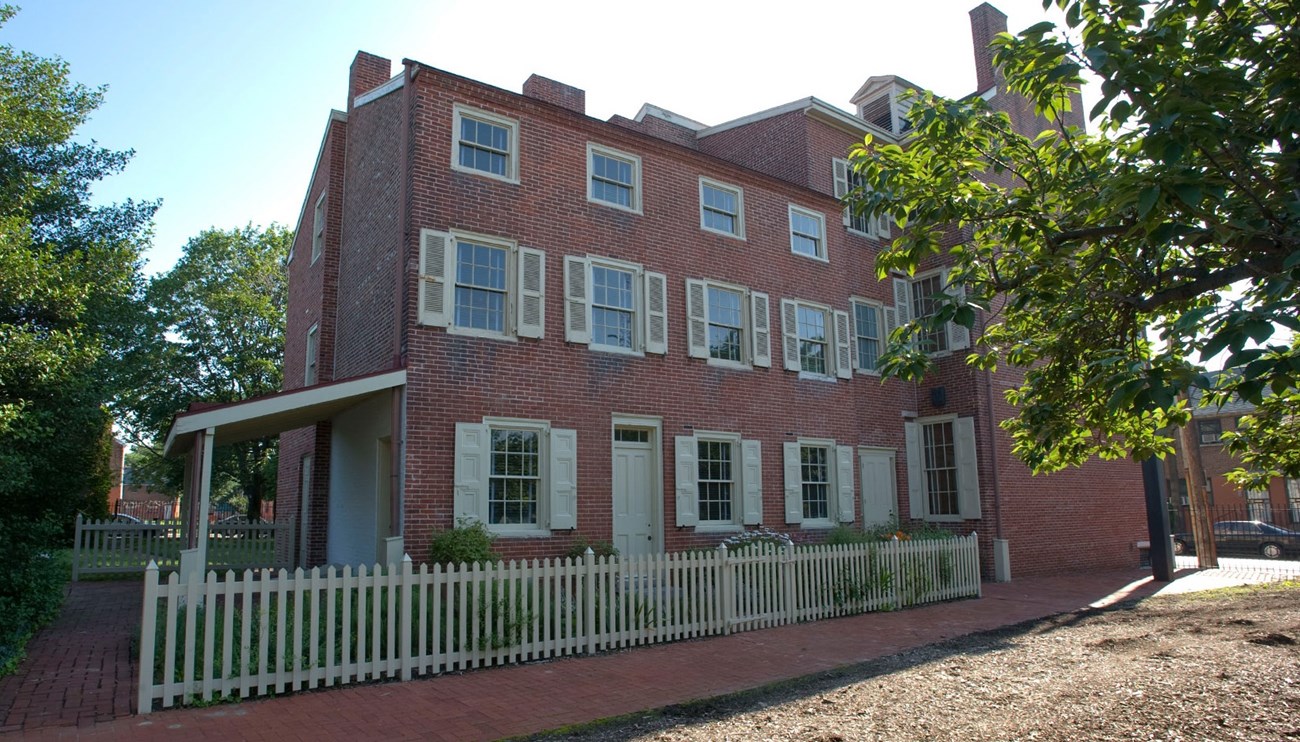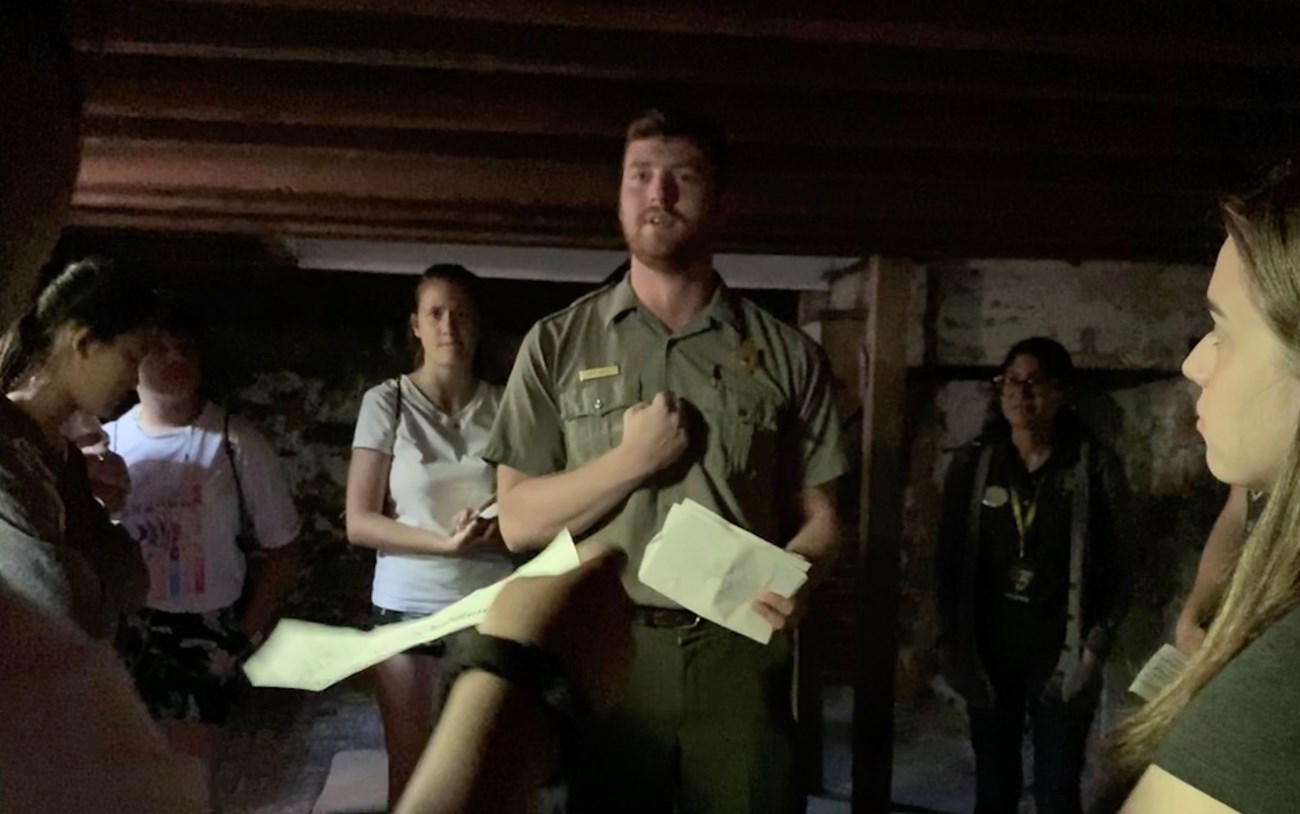Last updated: January 3, 2022
Article
National Park Getaway: Edgar Allan Poe National Historic Site
By Joanne Schillizzi, Park Ranger, Edgar Allan Poe National Historic Site

NPS Photo
EDGAR ALLAN POE—Just his name evokes visions of beating hearts under floorboards, and the prophetic croaking of “The Raven.” Although the world-renowned author lived in many cities, it was during his time in Philadelphia when most of his finest works were published.
Within walking distance of the world-famous Liberty Bell, sits a small house where the 19th-century American author lived for a brief time. Today the home is preserved as the Edgar Allan Poe National Historic Site. Visitors may explore the unfurnished and unrestored rooms on their own or join a guided tour with a park ranger.

NPS Photo
A visit to the house is sure to kindle one’s imagination. On bright sunny days the rooms fill with light, a healing place for the author’s ailing young wife, Virginia, who suffered from tuberculosis. On wintry, overcast days the rooms are eerily dark recalling Poe’s gothic tales such as the “Fall of the House of Usher” and “The Pit and Pendulum,”—all stories published during his time in Philadelphia.
The unfurnished rooms are a reminder of the financial and personal struggles of the author. There’s a sense of sadness and tragedy that trailed Poe throughout his life as revealed in the site’s exhibits. A highlight is a visit to the home’s cellar. Little imagination is needed when descending into the cellar, for it closely resembles the setting of the site’s signature story “The Black Cat.” Did Poe happen to trip over his cat, Catterina here and find inspiration for the horrific story? Those who have read the story, will know where the body was hidden!

NPS Photo
Although Poe is best known for his tales of terror and haunting poetry, he invented the modern detective story in Philadelphia with “The Murders of the Rue Morgue.” If imitation is the sincerest form of flattery, then Sir Arthur Conan Doyle’s creation of Sherlock Holmes is the perfect compliment to Poe’s C. Augustus Dupin character.
Poe spent much of his time as a literary critic and essayist, writing nearly a thousand pieces. His essay “The Philosophy of Furniture” inspired the park rangers to create a cozy and “not ostentatious” Reading Room at this site. Is it truly Poe’s idea of “good taste” or was he playing another hoax on his readers as he did with his pioneering science fiction story “The Balloon Hoax?” One can never tell with Poe, as one contemporary wrote “…Everybody wants to know him; but only a very few people seem to get well acquainted with him.”

NPS Photo
Visitors may view a brief audiovisual biography of Edgar Poe’s life and times. Children may explore the interactive exhibits and a 19th-century travel trunk packed with just the sort of items Poe and his wife would have travelled with to earn a Junior Ranger badge.
A step outside brings the visitor to the statue commemorating Poe’s most famous poem “The Raven” and a 19th-century-style cottage garden featuring plants mentioned in his works. Stop by. Get acquainted with Edgar Allan Poe and don’t be too alarmed if you should glimpse a black cat in the cellar window.
